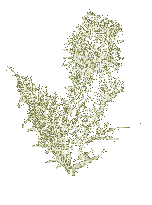
Robert Burns
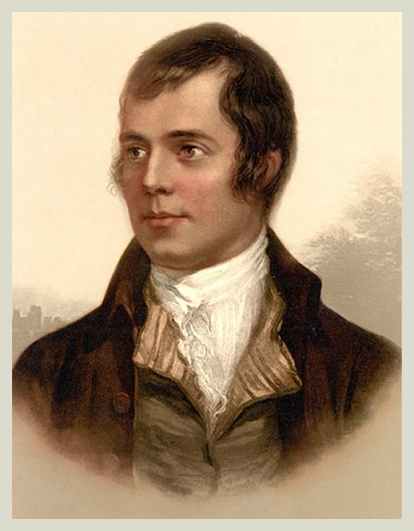
Robert Burns was born in Alloway, South Ayrshire, Scotland, the son of William Burness (1721 - 1784) or Burns (Robert Burns originally spelled his surname Burness, but eventually dropped the 'ess'), a self-educated tenant farmer from Dunnottar, Kincardinshire, and Agnes Broun (1732 - 1820), the daughter of a tenant farmer from Kirkoswald, South Ayrshire.

Robert Burns was born into a farming family at Alloway in Ayrshire in 1759. He died in Dumfries at the early age of 37 . Burns is also referred to as the Ploughman Poet or "the Bard" in part because of his work with Song lyrics. He was not only a poet but a dedicated lyricist. Few people recognize his work collecting and preserving Scottish traditional songs today but he was keenly interested in preserving Scotland's rich musical heritage. It was in danger of being lost as it was an oral tradition for the most part. Burns today is still widely regarded as the national poet of Scotland, and is celebrated worldwide. He is the best-known of the poets who have written in the Scots language, although much of his writing is also in English and a 'light' Scots dialect, accessible to an audience beyond Scotland.
He is regarded as a pioneer of the Romantic movement and after his death became an important source of inspiration to the founders of both liberalism and socialism. A cultural icon in Scotland and among Scots who have relocated to other parts of the world. Celebration of his life and work became almost a national charismatic cult during the 19th and 20th centuries, and his influence has long been strong on Scottish literature.
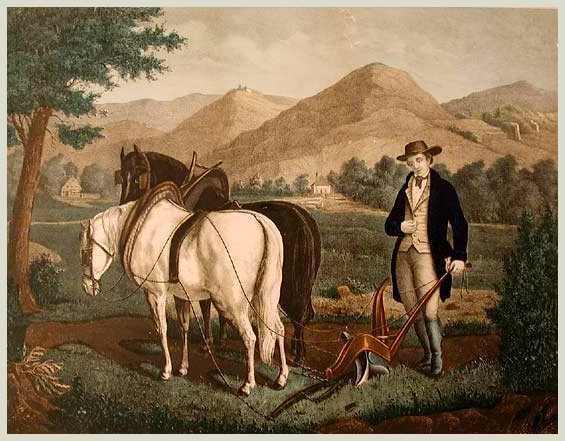
As well as making original compositions, Burns also collected folk songs from across Scotland, often revising or adapting them. His poem (and song) Auld Lang Syne is often sung at Hogmanay (New Year), and Scots Wha Hae served for a long time as an unofficial national anthem of the country. Other poems and songs of Burns that remain well-known across the world today, include A Red, Red Rose, A Man's A Man for A' That, To a Louse, To a Mouse, The Battle of Sherramuir, and Ae Fond Kiss.
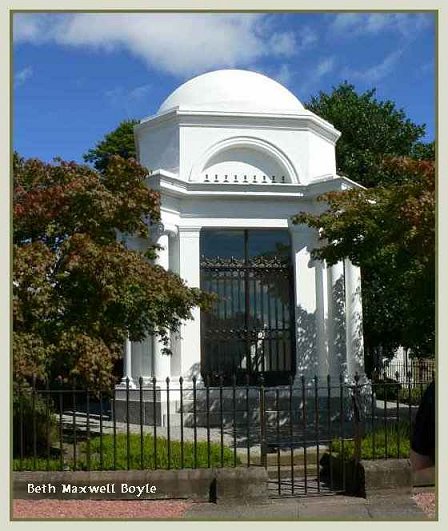
Burns rests in St Michael's Kirkyard in Dumfries.
He is interred in this impressive Neoclassical Mausoleum.
In the years following his death, Robert Burns' admirers came to believe that his simple grave was an insufficient memorial to the poet. In 1813, John Syme formed a committee and launched an appeal to build a mausoleum in his memory. One of the subscribers was the Prince Regent, later George IV. After a public advertisement, over 50 designs were received and the plans of T F Hunt, a London architect were approved.
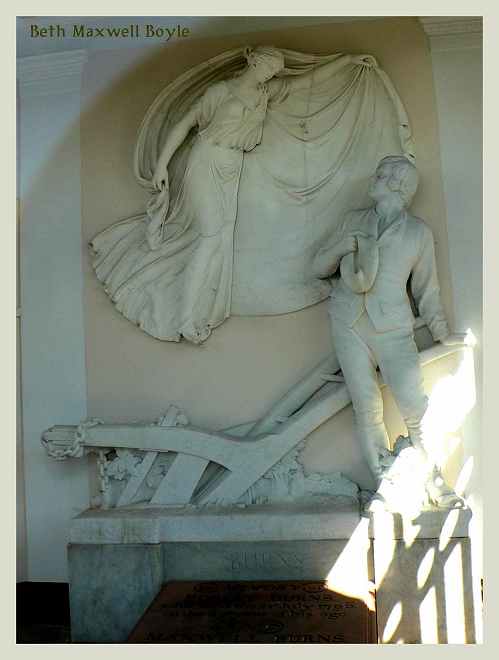
This fine Marble Memorial in the Mausoleum is
dedicated to the Plowman Poet
Burns Contributions to the Music World
In 1787 James Johnson, an Edinburgh engraver and music-seller, hired Burns to collect and arrange old Scottish songs for the Scots Musical Museum. That year Burns began collecting on trips to the Borders and the Highlands. He made himself a student of "ballad simplicity" and developed a theory of matching tunes to texts. Among the most famous of the 368 songs he wrote or adapted are "Auld Lang Syne," "My Love Is Like a Red, Red Rose," "John Anderson My Jo," "My Heart's in the Highlands," and "A Man's a Man for A'That." He contributed some of his later songs to George Thomson's Scottish Airs and Poetry, 1793-1818. Although Thomson commissioned elaborate and effective settings of many of these songs from Haydn and Beethoven, they are best sung in the simple folk style that Burns preferred. His methods prepared the way for later, more disciplined approaches to folk music by such composers as Vaughan Williams and Bartók.
The celebrated lyric "Scots Wha Hae," set to the tune of an old song, "Hey tutti tatie," is represented as the battle call of King Robert the Bruce, leading the Scottish troops against the English at the Battle of Bannockburn in 1314. In 1793, the year of Burns's composition, he told Thomson he had in mind, not only the mediaeval struggle for freedom, but "some other struggles of the same nature, not quite so ancient." He was concerned at the time about repressive measures being taken against reformers by those who feared the French Revolution. Among these was the trial of Unitarian minister Thomas Fyshe Palmer for sedition. After only a token show of evidence, Palmer was sentenced to deportation to an Australian penal colony.
Hear Burn's Song Caledonia performed
with photos from around Scotland
Caledonia
I.
There was once a day--but old Time then was young--
That brave Caledonia, the chief of her line,
From some of your northern deities sprung,
(Who knows not that brave Caledonia's divine?)
From Tweed to the Orcades was her domain,
To hunt, or to pasture, or do what she would:
Her heav'nly relations there fixed her reign,
And pledg'd her their godheads to warrant it good.
II.
A lambkin in peace, but a lion in war,
The pride of her kindred the heroine grew;
Her grandsire, old Odin, triumphantly swore
"Whoe'er shall provoke thee, th' encounter shall rue!"
With tillage or pasture at times she would sport,
To feed her fair flocks by her green rustling corn;
But chiefly the woods were her fav'rite resort,
Her darling amusement, the hounds and the horn.
III.
Long quiet she reign'd; till thitherward steers
A flight of bold eagles from Adria's strand:
Repeated, successive, for many long years,
They darken'd the air, and they plunder'd the land:
Their pounces were murder, and terror their cry,
They'd conquer'd and ruin'd a world beside;
She took to her hills, and her arrows let fly--
The daring invaders they fled or they died.
IV.
The fell harpy-raven took wing from the north,
The scourge of the seas, and the dread of the shore;
The wild Scandinavian boar issu'd forth
To wanton in carnage, and wallow in gore;
O'er countries and kingdoms their fury prevail'd,
No arts could appease them, no arms could repel;
But brave Caledonia in vain they assail'd,
As Largs well can witness, and Loncartie tell.
V.
The Cameleon-savage disturbed her repose,
With tumult, disquiet, rebellion, and strife;
Provok'd beyond bearing, at last she arose,
And robb'd him at once of his hope and his life:
The Anglian lion, the terror of France,
Oft prowling, ensanguin'd the Tweed's silver flood:
But, taught by the bright Caledonian lance,
He learned to fear in his own native wood.
VI.
Thus bold, independent, unconquer'd, and free,
Her bright course of glory for ever shall run:
For brave Caledonia immortal must be;
I'll prove it from Euclid as clear as the sun:
Rectangle-triangle, the figure we'll choose,
The upright is Chance, and old Time is the base;
But brave Caledonia's the hypothenuse;
Then ergo, she'll match them, and match them always.
Burns Night, effectively a second national day is celebrated on the 25th of January with Burns suppers around the world, and is still more widely observed than the official national day, Saint Andrew's Day, or the proposed North American celebration Tartan Day. The format of Burns suppers has not changed since Robert's death in 1796. The basic format starts with a general welcome and announcements followed with the Selkirk Grace. Just post the grace comes the piping and cutting of the Haggis, where Robert's famous Address To a Haggis is read, and the haggis is cut open. The event usually allows for people to start eating just after the haggis is presented. This is when the reading called the "immortal memory", an overview of Robert's life and work is given; the event usually concludes with the singing of Auld Lang Syne.
Selkirk Grace
Some hae meat and canna eat,
And some wad eat that want it;
But we hae meat, and we can eat,
Sae let the Lord be thankit.
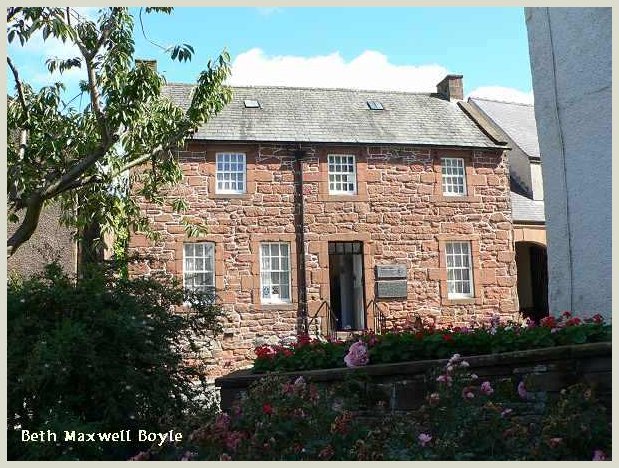
The House in Dumfries where Burns lived until he died in 1796
Dumfries
Dumfries in Burns' time was economically, and socially, more significant than it is today; in 1752 it was described as the 'Scottish Liverpool' with more American tobacco trade than Glasgow. Its importance as a west coast port was emphasized by the fact that an estimated 21,000 people from all over Scotland, more than the town's own population, emigrated through Dumfries in 1851 to the United States, Australia and New Zealand. Like any important center, the town attracted its share of craftsmen, literary and social, and those who were politically aware; the French Revolution was at hand and nationalism was in the air. The Globe at that time was a town center Inn of some stature and it is no wonder that the bard was drawn to it.
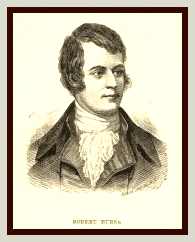 A Man's A Man For A' That
Is there for honest Poverty
That hings his head, an' a' that;
The coward slave-we pass him by,
We dare be poor for a' that!
For a' that, an' a' that.
Our toils obscure an' a' that,
The rank is but the guinea's stamp,
The Man's the gowd for a' that.
What though on hamely fare we dine,
Wear hoddin grey, an' a that;
Gie fools their silks, and knaves their wine;
A Man's a Man for a' that:
For a' that, and a' that,
Their tinsel show, an' a' that;
The honest man, tho' e'er sae poor,
Is king o' men for a' that.
Ye see yon birkie, ca'd a lord,
Wha struts, an' stares, an' a' that;
Tho' hundreds worship at his word,
He's but a coof for a' that:
For a' that, an' a' that,
His ribband, star, an' a' that:
The man o' independent mind
He looks an' laughs at a' that.
A prince can mak a belted knight,
A marquis, duke, an' a' that;
But an honest man's abon his might,
Gude faith, he maunna fa' that!
For a' that, an' a' that,
Their dignities an' a' that;
The pith o' sense, an' pride o' worth,
Are higher rank than a' that.
Then let us pray that come it may,
(As come it will for a' that,)
That Sense and Worth, o'er a' the earth,
Shall bear the gree, an' a' that.
For a' that, an' a' that,
It's coming yet for a' that,
That Man to Man, the world o'er,
Shall brothers be for a' that.
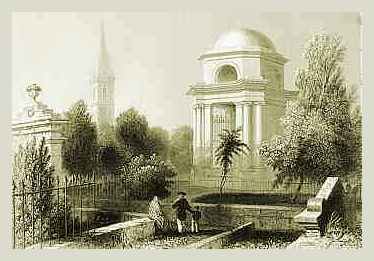 Burns Tomb, Dumfries
In St Michaelís Kirkyard, a short distance from Robert Burns House, is the resting place of the poet. Initially Burns had been buried in a more modest plot in the kirkyard but on 19th September 1815, the poetís body was exhumed and reinterred in a vault within this Greek-style temple.Keys for the Mausoleum are available from Robert Burns House, t. 01387 255297
|
References and Links of Interest

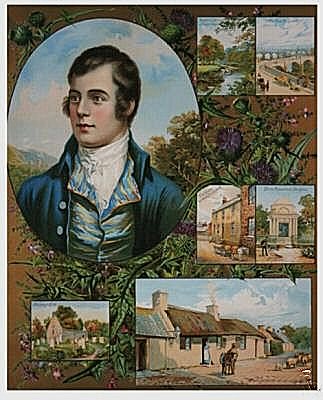
Celebrate 250 Years of Robert Burns
2009
Here is a wonderful website where a antiquarian has reproduced
a collection from the Illustrated London News in CD form covering historic events
and news from the Centenary of the birth of Robert Burns in 1859.
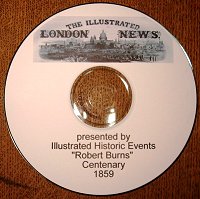
Lyrics of Gold
Celebrate 250 Years of Robert Burns
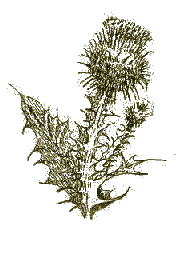
Copyright 2007 , Jim & Beth Boyle, All Rights Reserved
No part of this website may be used for any purpose ( including using images )
without written consent from The Rams Horn

